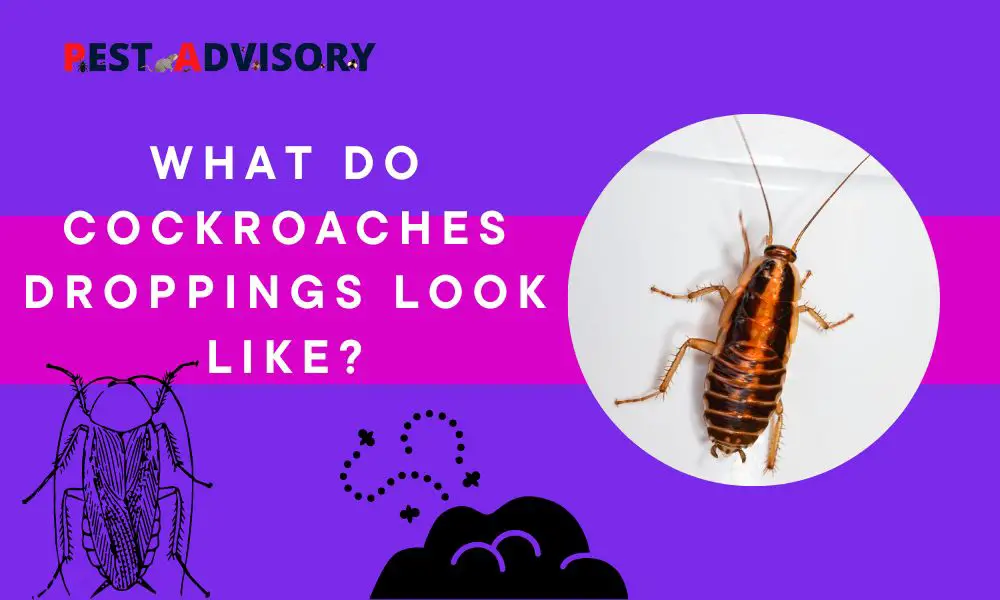Was that a cockroach scurrying across the floor?
Well, it was brown. It had antennas and tiny legs. It did look like that familiar pest you know all too well.
The very same pest is seen invading your fridge and flying off without warning, giving you a mini heart attack.
Important Note: If you're tired of pests and want a reliable solution, then you should definitely consider seeking help from a professional pest control company. DIY solutions can be effective, but if you're dealing with a significant pest infestation, you don't want to rely solely on DIY methods. Pest control companies typically don't charge huge fees. You can fill out this form to receive free quotes from the top local pest control companies, and compare the quotes and see for yourself. Then, finally, your pest problems will be eliminated for good.
Is there any way of making sure that it’s a cockroach?
Maybe there is.
Nobody wants to search their home for cockroach poop, but this simple task can help you ward off infestation and disease. Try to locate roach feces, and you will soon be close enough to their nests.
How to Identify Cockroach Droppings?
Cockroaches are infamous for leaving behind a lot of feces.
While they can poop everywhere around your house, they foolishly end up defecating quite close to their nesting or feeding areas, often giving away their hideouts.
Cockroach droppings are fairly easy to spot, and often become a shred of convenient evidence to exterminate the cockroaches.
The size of the droppings can directly indicate the size of the cockroach. The larger the droppings, the bigger is the roach hiding in your home.
What Does Cockroach Feces Look Like?
Roach droppings usually look like specks of pepper, coffee grounds, or dark grains of rice.
They are often referred to as specs and can also appear as brown or black fecal stains, or even as dark ink, depending on the roach and the surface.
These stains might resemble smears that can be light streaks on the surface, or sometimes raised and prominent.
However, larger roaches leave behind solid feces shaped like cylinders. This is more difficult to clean and also points towards a major infestation that needs to be addressed at the earliest.
The color is brown or black, depending on the species. The droppings from larger roaches have ridges running the length of the feces, from tip to tip.
Where Do You Find Cockroach Droppings?
Cockroaches scurry around a lot. Therefore, they have no fixed defecation spots, unlike humans or dogs. However, they usually defecate near their food sources and nesting or congregation areas.
Now, this is a matter of grave concern, as roaches prefer feeding on our leftovers.
This means that their poop can very well get mixed with our food, contaminating it and spreading serious diseases like Typhoid, Cholera, and Salmonella.
So where do you start hunting for cockroach droppings?
Easy, everywhere the cockroach goes, you’ll find some traces of its feces behind.
For example, you’ll likely find droppings in and around their crawl spaces, such as underneath cupboards, behind electronics, or inside leaky pipes.
In fact, roaches tend to leave their poop behind wherever they start building their colony.
Common places to find cockroach droppings include:
- On top of cabinets, within doors, and in other high spaces that stay hidden and unhygienic.
- Within baseboards
- Deep Inside drawers and closets
- Underneath and behind washers, refrigerators, and sinks.
- Minor cracks and openings in the floor or walls
Is it Important to Clean Roach Droppings?
So can you ignore roach feces? Is it a cause for concern or just another minor hassle? Well, the answer is yes. Roach droppings can cause severe allergic reactions along with other diseases.
Cockroach feces have been documented to worsen the occurrence and intensity of asthma. Apart from this, unpicked poop will attract more roaches, who will gain confidence about not being disturbed, and continue troubling you.
In fact, exterminators often use this knowledge to their advantage, using roach poop as an incentive to lure their comrades. They strategically place poison or chemicals in areas near roach poop so that more roaches will come into contact with their medicines.
Slowly, a chain reaction is established. The more roaches scurry in towards the natural pheromone left behind by previous roaches, the more they lose their lives.
How To Clean Roach Droppings?
The number one solution is running a quick vacuum of overall spots susceptible to a roach attack.
- Just vacuum up any loose droppings from the surface, and run the suction under and between dark nooks, cracks, and crevices.
- Using a HEPA filter-based vacuum may successfully cut down on airborne contaminants.
- Once done, remember to dispose of the vacuum’s contents promptly in an airtight disposal bag, to avoid a resurgence of the gross pests.
- You can also double-check this exercise by wiping down the sanitized surfaces with hot, soapy water to remove any smears or traces left behind.
How to Differentiate Cockroach Droppings from Others?
So now you know what roach droppings look like.
Whenever you see unfamiliar smears, try to recall these properties and check the stains for ridges or raised bumps.
The shape and appearance of the ridges will help you isolate and determine whether the droppings are roach droppings or mouse droppings. The latter does not have ridges and is quite easy to rule out.
Mouse poop is also slightly larger and often has short hairs in them.
Bottom Line
A cockroach infestation is very common and relatively easier to combat as compared to other stubborn pests.
If you notice dark grains underneath or inside cabinets, behind your refrigerator, or in other cracks and crevices, you can judge the gravity and extent of the infestation and act accordingly.
Cockroaches act as vectors for various diseases and should be addressed at the earliest for hygiene reasons.
And finally, always prefer to call professional exterminators to help you solve the problem.

